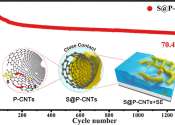ACS Applied Materials and Interfaces
ACS Applied Materials & Interfaces is a peer-reviewed scientific journal that was established in 2009 by the American Chemical Society. The current editor in chief is Kirk S. Schanze. ACS Applied Materials & Interfaces covers advanced active and passive electronic/optical materials, coatings, colloids, biomaterials and bio-interfaces, polymer materials, hybrid and composite materials; and friction and wear. It is currently indexed/abstracted in: CAS, MEDLINE/PubMed, Current Contents, and Science Citation Index.
- Publisher
- ACS
- Website
- http://pubs.acs.org/journal/aamick
Some content from Wikipedia,
licensed under CC BY-SA









